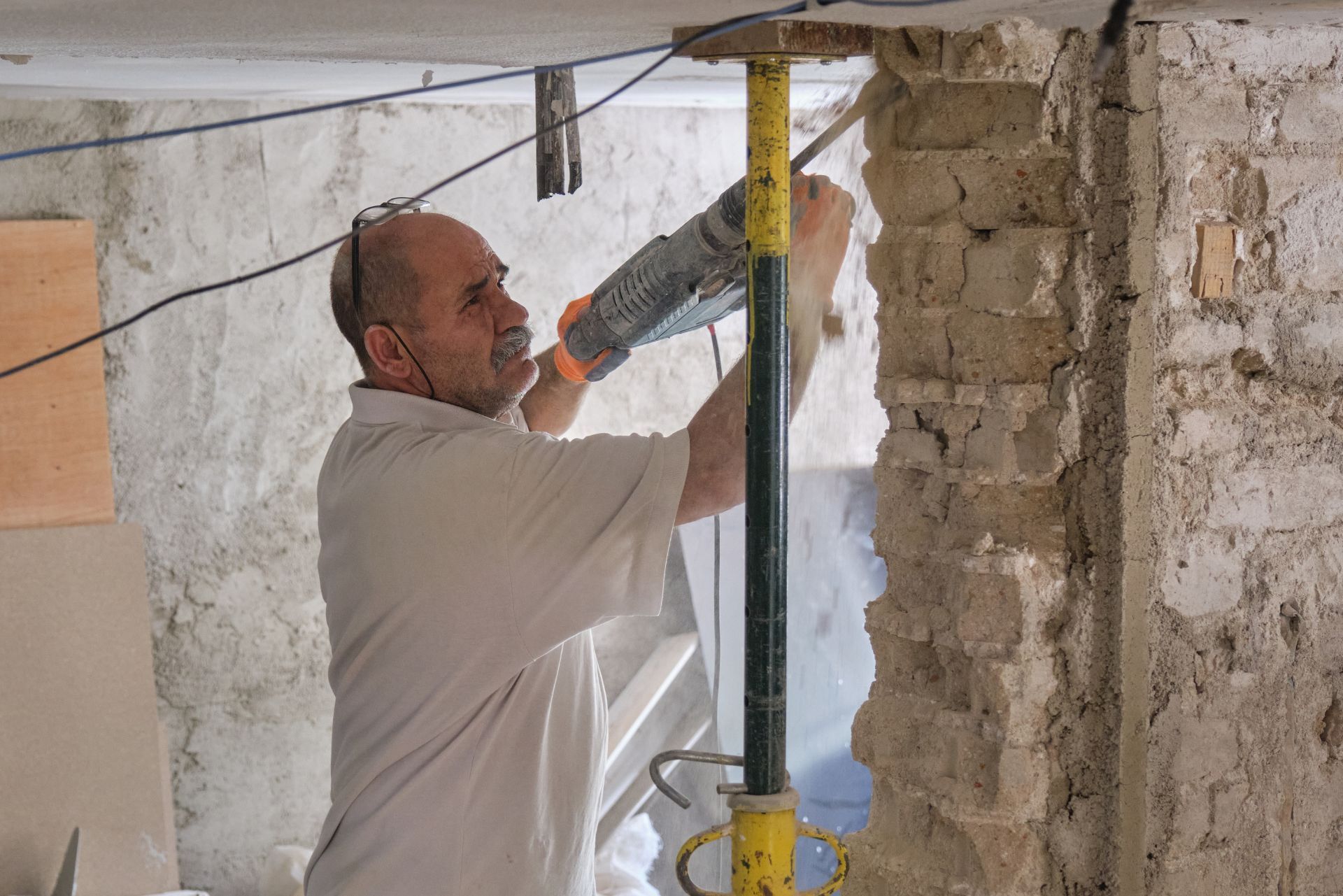Top 3 Recommended Policies

In the world of construction and restoration, having the right insurance is crucial for protecting both the contractor and the clients. For restoration contractors in Missouri, understanding the nuances of insurance can be the difference between a successful project and a financial disaster. This article delves into the essential aspects of restoration contractor insurance, including its types, coverage options, and the importance of choosing the right policy.
Understanding Restoration Contractor Insurance
Restoration contractor insurance is designed specifically for professionals who engage in restoration projects, such as fire, water, or mold remediation. This insurance provides coverage for a variety of risks associated with the restoration industry, ensuring that contractors can operate confidently while minimizing potential financial losses.
What Does Restoration Contractor Insurance Cover?
Restoration contractor insurance typically encompasses several key areas of coverage. Understanding these can help contractors choose the right policy for their needs.
- General Liability Insurance: This is the cornerstone of any contractor's insurance policy. It protects against claims of bodily injury or property damage that may occur during the course of work.
- Professional Liability Insurance: Also known as errors and omissions insurance, this coverage protects contractors against claims of negligence or failure to deliver services as promised.
- Workers' Compensation Insurance: This is essential for any contractor with employees. It covers medical expenses and lost wages for workers who are injured on the job.
- Commercial Auto Insurance: If a contractor uses vehicles for business purposes, this coverage is necessary to protect against accidents involving company vehicles.
Why Is Insurance Important for Restoration Contractors?
The restoration industry is fraught with risks. From potential injuries on the job site to damage to a client's property, the liabilities can be significant. Insurance serves as a safety net, allowing contractors to manage these risks effectively. Without appropriate coverage, a single incident could lead to devastating financial consequences.
Moreover, many clients require proof of insurance before hiring a contractor. This not only protects the client but also enhances the contractor's credibility. Having the right insurance can be a deciding factor in winning contracts and maintaining a positive reputation in the industry.
In addition to the basic coverage options, restoration contractors may also consider specialized policies tailored to their unique needs. For instance, coverage for equipment breakdown can be crucial, as restoration work often relies on expensive machinery and tools. If a piece of equipment fails, the costs of repair or replacement can be substantial, potentially halting projects and impacting cash flow. Furthermore, environmental liability insurance can protect contractors from claims related to pollution or contamination that may arise during restoration work, especially in cases involving hazardous materials.
Another important aspect of restoration contractor insurance is the inclusion of business interruption coverage. This type of insurance can provide financial support in the event that a contractor is unable to operate due to unforeseen circumstances, such as a natural disaster or a significant equipment failure. By covering lost income and ongoing expenses during the downtime, this coverage can help ensure that a contractor's business remains viable through challenging periods, allowing them to focus on recovery and future projects without the added stress of financial instability.

Types of Insurance Policies for Restoration Contractors
There are various types of insurance policies available for restoration contractors, each serving a unique purpose. Understanding these can help contractors tailor their insurance portfolio to their specific needs.
General Liability Insurance
General liability insurance is fundamental for any contractor. It covers a wide range of incidents, including:
Bodily injury claims resulting from accidents on the job site.
Property damage claims if a contractor inadvertently damages a client's property.
Legal fees associated with defending against claims.
In Missouri, the average cost of general liability insurance can vary based on the size of the business, the number of employees, and the specific risks associated with the work being performed. It is advisable for contractors to shop around and compare quotes from different insurers to find the best coverage at a competitive rate. Additionally, many insurers offer risk management resources that can help contractors minimize potential liabilities. By implementing safety protocols and training programs, contractors can not only reduce their risk exposure but may also qualify for discounts on their premiums.
Professional Liability Insurance
This type of insurance is particularly important for contractors who provide consulting or design services. It protects against claims of negligence, errors, or omissions in the services provided. For example, if a contractor fails to identify a potential issue during an inspection, leading to further damage, professional liability insurance can help cover the costs associated with the claim.
While not all restoration contractors may feel the need for this coverage, it can be invaluable, especially for those working on complex projects or in specialized areas like mold remediation. Clients may also prefer contractors who carry professional liability insurance, as it demonstrates a commitment to professionalism and accountability. Furthermore, having this insurance can enhance a contractor's credibility in the eyes of potential clients, as it indicates a proactive approach to managing risks and ensuring quality service delivery.
Workers' Compensation Insurance
In Missouri, workers' compensation insurance is mandatory for employers with five or more employees. This insurance provides coverage for medical expenses and lost wages for workers injured on the job. It also protects employers from lawsuits related to workplace injuries.
For restoration contractors, who often work in hazardous environments, having workers' compensation insurance is essential. It not only ensures compliance with state laws but also fosters a safe working environment. Contractors can focus on their work without the constant worry of potential financial repercussions from workplace accidents. Additionally, investing in safety training and equipment can further reduce the likelihood of injuries, leading to lower insurance costs over time. Many contractors find that a strong safety record not only helps in managing insurance premiums but also boosts employee morale and productivity, creating a more efficient work environment overall.
Factors Affecting Insurance Costs
Several factors can influence the cost of insurance for restoration contractors in Missouri. Understanding these factors can help contractors make informed decisions when selecting their insurance policies.
Business Size and Revenue
The size of a restoration business and its annual revenue play a significant role in determining insurance premiums. Larger businesses with more employees and higher revenue typically face higher insurance costs due to the increased risk associated with their operations. Conversely, smaller businesses may benefit from lower premiums, but they must ensure they have adequate coverage to protect against potential claims. Additionally, the scale of operations can also affect the types of projects undertaken; larger firms might engage in more complex jobs that require specialized equipment and expertise, further influencing their risk profile and insurance needs.
Claims History
A contractor's claims history can significantly impact insurance costs. If a contractor has a history of frequent claims, insurers may view them as a higher risk, resulting in increased premiums. Conversely, a clean claims history can lead to lower rates and may even qualify contractors for discounts. It’s also worth noting that the nature of past claims matters; claims related to property damage or liability can weigh more heavily than those for minor incidents. Contractors who actively implement risk management strategies and maintain a solid safety record may find themselves in a better position when negotiating their premiums.
Coverage Limits and Deductibles
The coverage limits chosen by a contractor also affect insurance costs. Higher coverage limits generally lead to higher premiums, while lower limits can reduce costs. Additionally, the deductible amount plays a crucial role; higher deductibles can lower premiums but may result in out-of-pocket expenses during a claim. Contractors must strike a balance between affordable premiums and adequate coverage to protect their business effectively. It's important for restoration contractors to assess their unique risks and consider factors such as the types of materials they handle, the geographic areas they serve, and the potential for natural disasters in those regions. Tailoring coverage to fit these specific needs can lead to more effective risk management and potentially lower insurance costs in the long run.
Choosing the Right Insurance Provider
Selecting the right insurance provider is a critical step for restoration contractors. The right insurer can make a significant difference in the level of service and support received during claims processes and policy management.
Researching Insurance Companies
Before committing to an insurance provider, it is essential to conduct thorough research. Look for companies that specialize in contractor insurance, as they will have a better understanding of the unique risks associated with the restoration industry. Reading customer reviews and testimonials can provide valuable insights into the insurer's reputation and customer service quality. Additionally, consider reaching out to other restoration contractors in your network to gather recommendations and personal experiences with different insurers. This firsthand information can be invaluable in making an informed decision.
Comparing Policies
Once potential insurance providers have been identified, it is crucial to compare the policies they offer. Pay attention to the coverage limits, exclusions, and additional endorsements available. Some insurers may offer specialized coverage options tailored to the restoration industry, which can provide added peace of mind. For instance, coverage for equipment breakdown or liability protection for subcontractors can be vital for contractors who often work with various teams on-site.
Additionally, obtaining quotes from multiple providers can help contractors gauge the market rates and ensure they are getting a competitive price for their coverage. However, it is essential to consider the overall value of the policy rather than just the cost, as cheaper options may lack critical coverage. Don't hesitate to ask potential insurers about their claims process and how they handle disputes, as a smooth claims experience can significantly impact your business's operations during challenging times.
Consulting with an Insurance Agent
Working with an experienced insurance agent can be beneficial for restoration contractors. An agent can help navigate the complexities of insurance policies, ensuring that contractors understand their options and choose the best coverage for their needs. They can also provide insights into industry trends and help contractors stay compliant with state regulations. Furthermore, a knowledgeable agent can assist in customizing a policy that aligns with specific business operations, such as including coverage for natural disasters or environmental liabilities, which are particularly relevant in the restoration field.
Moreover, an agent can serve as a valuable resource for ongoing support, helping contractors adjust their coverage as their business evolves. As restoration projects can vary significantly in scope and risk, having an agent who understands these nuances can help ensure that contractors are adequately protected at all times. This relationship can also lead to potential discounts or incentives as the contractor builds a history with the insurer, further enhancing the overall value of the insurance policy.

Common Exclusions in Restoration Contractor Insurance
While restoration contractor insurance offers valuable protection, it is essential to be aware of common exclusions that may apply. Understanding these exclusions can help contractors avoid unexpected gaps in coverage.
Intentional Damage
Most insurance policies will not cover damages resulting from intentional acts. If a contractor deliberately causes damage to a client's property, they will not be able to file a claim for those costs. It is crucial for contractors to operate ethically and professionally to avoid situations that could lead to intentional damage claims. Furthermore, maintaining a strong relationship with clients can help mitigate misunderstandings that may arise during a project, as clear communication about the scope of work and potential risks can prevent disputes.
Wear and Tear
Insurance policies typically do not cover damages resulting from normal wear and tear. For example, if a restoration contractor is working on an older building and the materials begin to deteriorate due to age, these issues would not be covered under a general liability policy. Contractors should advise clients on maintenance and care to help mitigate these risks. Providing clients with a detailed maintenance plan not only enhances the longevity of the restoration work but also reinforces the contractor's commitment to quality and customer satisfaction, which can lead to positive referrals and repeat business.
Contractual Liability
Many policies exclude liability arising from contractual obligations. If a contractor agrees to take on additional responsibilities beyond standard practices in a contract, they may not be covered for claims related to those obligations. It is essential for contractors to carefully review contracts and understand their liabilities before signing. Additionally, seeking legal advice when drafting or negotiating contracts can be invaluable. A well-structured contract can clearly delineate responsibilities and expectations, thereby reducing the likelihood of disputes and ensuring that all parties are on the same page regarding the scope of work and potential liabilities.
Best Practices for Managing Insurance as a Restoration Contractor
Managing insurance effectively is vital for restoration contractors to ensure they are adequately protected and compliant with industry standards. Here are some best practices to consider:
Regularly Review Insurance Policies
Insurance needs can change over time as a business grows or evolves. It is essential for restoration contractors to regularly review their insurance policies to ensure they still meet their needs. This includes reassessing coverage limits, deductibles, and any new risks that may have emerged.
Maintain Accurate Records
Keeping detailed records of projects, claims, and communications with clients can be invaluable during the claims process. Accurate documentation can help expedite claims and provide evidence in case of disputes. Contractors should maintain organized records and consider using software tools to streamline this process.
Stay Informed About Industry Changes
The restoration industry is constantly evolving, with new regulations and best practices emerging regularly. Staying informed about these changes can help contractors make better decisions regarding their insurance needs. Attending industry conferences, participating in training sessions, and networking with other professionals can provide valuable insights.
Conclusion
In conclusion, restoration contractor insurance is an essential aspect of operating a successful restoration business in Missouri. Understanding the various types of coverage, the factors that influence insurance costs, and the importance of selecting the right provider can help contractors protect their businesses effectively.
By being proactive in managing their insurance needs and staying informed about industry trends, restoration contractors can navigate the complexities of insurance with confidence. This not only safeguards their business but also enhances their reputation and credibility in the eyes of clients.
Ultimately, the right insurance policy can provide peace of mind, allowing restoration contractors to focus on what they do best—restoring properties and helping clients recover from disasters.
Contact Us
Phone
Location

